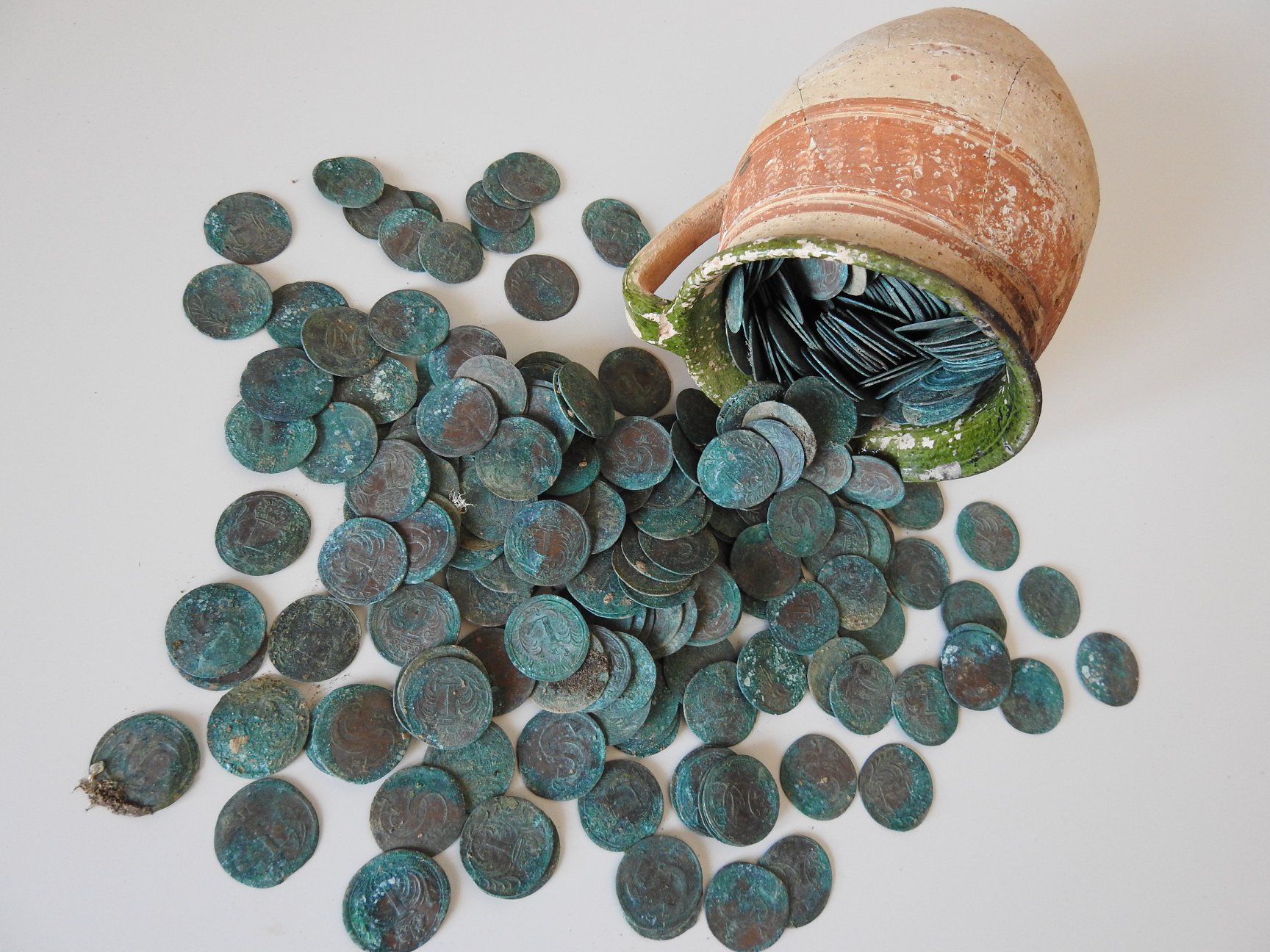It is a nice booty that was unearthed in February, in a small village in Slovakia. In Obišovce, in the east of the country, archaeologists have thus found several hundred silver coins used over 300 years ago. The treasure was carefully hidden under the floor of a Renaissance church, itself buried under another 19th century parish, the Notre-Dame-du-Rosaire church, as Artnet News reports.
The latter had been built on the foundations of the Sainte-Martina church, pillaged and destroyed in 1705. It was during a renovation of the parish of the 19th century that the workers in charge of the works exhumed the ruins of the old church. And under the ground of the building, hidden from view by all by a small flagstone, the archaeologists were able to discover a sealed ceramic jug containing 500 silver coins, each wrapped in linen.
Read also: In Orkney Islands, a storm uncovers human remains of Picts and Vikings
A treasure saved from looting
Most of the coins being struck by local mining companies, it was easy for Slovak archaeologists to identify the time when they were in circulation. The oldest is stamped 1702: Slovakia was then governed by Hungary under the Habsburgs. While it is impossible to estimate their real value, their historical contribution is “immense” , says archaeologist Peter Šimčík.
According to him, the pieces were collected during donations from pilgrims and minors. It was a local currency of low value, which mine workers exchanged for commodities but also used for charitable purposes, says the archaeologist.
Archaeologists examine the foundations of the Church of St. Martina in Obišovce. Triglav / Facebook
Read also: Where does Pope Francis' crucifix come from during his world prayers?
This small fortune was even baptized as a “monocular treasure” by the archeology team, in honor of the Polish and one-eyed priest who is said to have hidden the pieces in the Church of St. Martina. Archives of the time indeed report that a new Catholic priest, blind in one eye, would have visited the building around 1687. He would then have sheltered the money to preserve it from a series of revolts against the Habsburgs.
Despite the looting, the destruction of the church in 1705, and the reconstruction of another building in the middle of the 19th century, the treasure remained hidden during all these years. The discovery was eventually returned to the state as required by Slovak law. Without these restoration works, the pieces could have remained underground for years to come.








